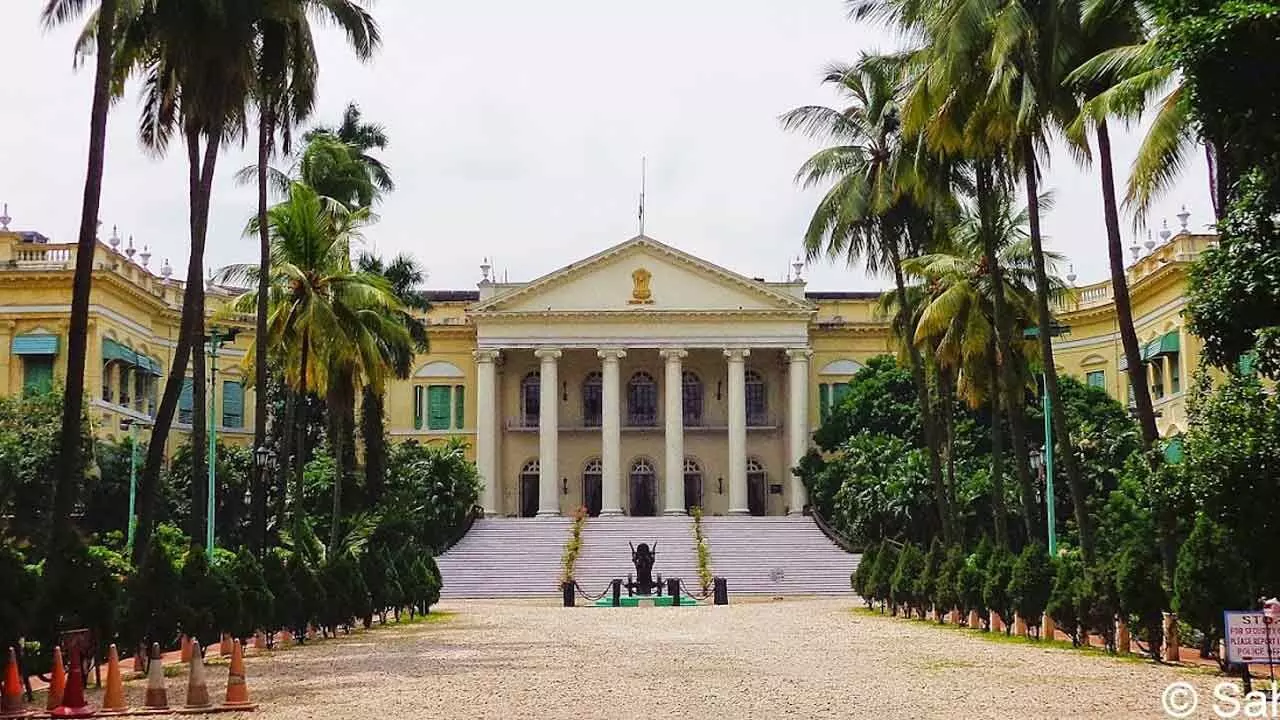All Raj Bhavans Must Draw Inspiration From Kolkata’s Raj Bhawan Primary School
All Raj Bhavans Must Draw Inspiration From Kolkata’s Raj Bhawan Primary School

There are often debates over whether India, at this age, needs sprawling and palatial Raj Bhavans, which presently number 38 spread across the country, and whether these spaces can be utilised for social and developmental purposes. Of course, arriving at a consensus may remain elusive as both sides of the arguments will seem good in their own way. To illustrate a point on how meaningfully such spaces or at least a part of a governor’s house can be used let us take the case of the Raj Bhavan in Kolkata. The architectural marvel built in 1803 over 7,800 square metres (84,000 square feet) and surrounded by a compound of 11 hectares (27 acres), is India’s oldest Raj Bhavan. The premises house a primary school (Hindi and Bengali mediums) for children from the most vulnerable sections of the society staying in nearby slums and streets. Incidentally, the school has quietly turned 50 recently. The Raj Bhawan free primary school for the Under-11 age-group was started in 1974 by the then Congress government in the state-led by Siddhartha Sankar Ray, converting the erstwhile horse stable in the premises into this much needed temple of learning, which has been rendering yeoman service ever since.
Fifty years down the road, the school, away from the visibility of the most, has close to 124 students and most importantly with almost a zero drop-out rate, according to Arun Prasad Singh, the school’s head master. Forget about outside visibility, even inside the campus, the enthusiasm and vibes are palpable. Singh and his colleagues go out and visit places (different ghats) on the banks of the Ganga to convince the parents to send their children to the free primary school, where they would also get uniforms, school bags and books and other stationaries part from midday meals, with funds from the state government and various NGOs. The school had a fresh lease of life after ‘Literacy India’ rose to the occasion and started standing by the institution and its students, rock solid. What’s more, these street kids have been introduced to computer education, thanks to Gyantantra from Literacy India.
The acceptability and adaptability of the students are to be seen to be believed. During the harrowing Covid days, they were provided online tuitions. Sanghamitra Chanda, Project Director of Literacy India, has bigger plans and is now working on a model to keep a tab on all students after they leave this school on the completion of fifth standard, the maximum level that school provides. Continuity in their learning and education is the mantra. Realising that ‘all work and no play makes Jack a dull boy’ and to ensure physical fitness, there are also co-curricular activities, including sports and games and PT classes. No stone is left unturned to ensure that these kids enjoy coming to school and get enlightened in due course. There are several instances when students from the Raj Bhawan Primary School won prizes at inter-school competitions organised at some of the premier schools in the city. It is time other states take cue and emulate this noble endeavour. After we continue to swear by the well-intended ‘Padhega India, Tabhi To Badhega India’ concept.


